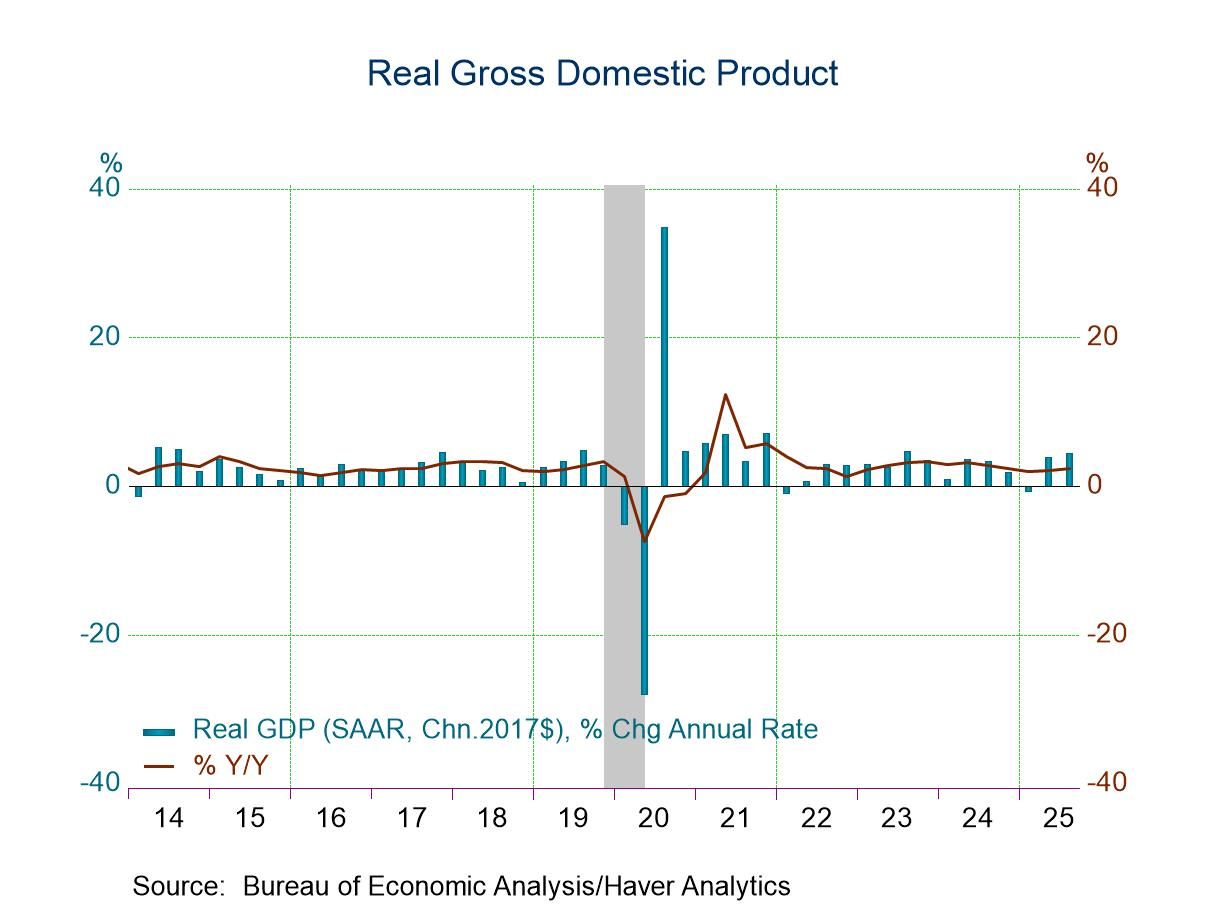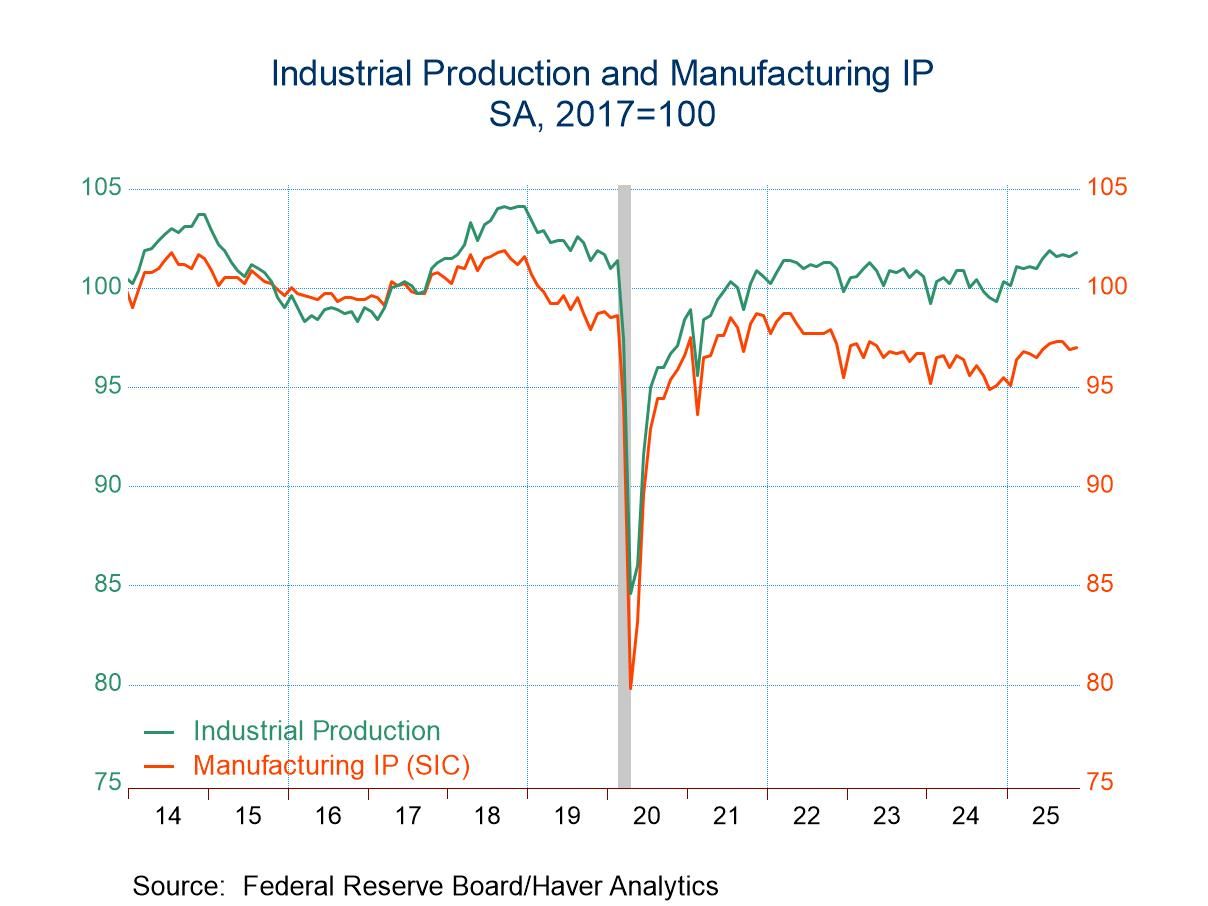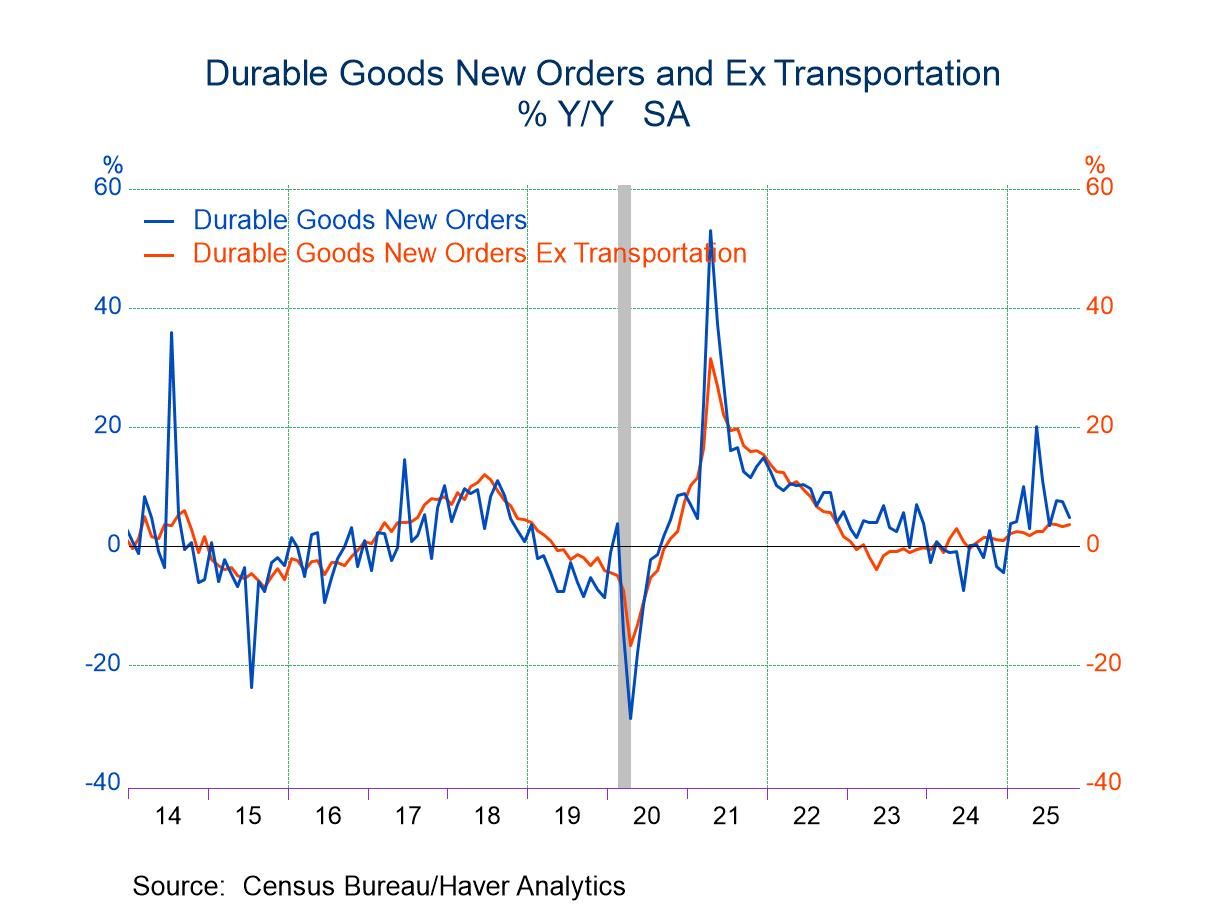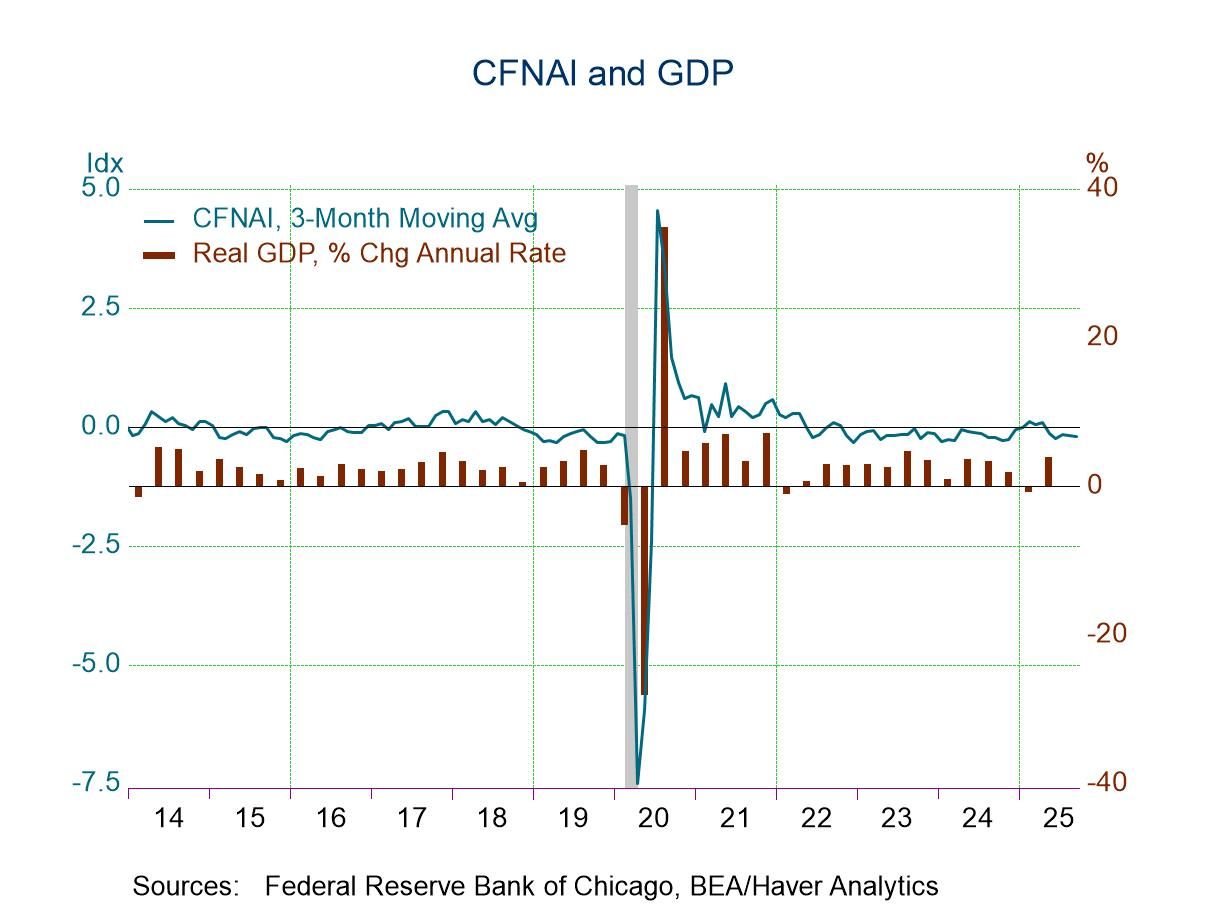 Global| Jun 07 2018
Global| Jun 07 2018U.S. Initial Unemployment Insurance Applications Slip
by:Tom Moeller
|in:Economy in Brief
Summary
Initial claims for unemployment insurance eased to 222,000 during the week ended June 1 from 223,000 during the prior week, revised from 221,000. Expectations in the Action Economics Forecast Survey were for 220,000 claims. The four- [...]
Tom Moeller June 7, 2018
Initial claims for unemployment insurance eased to 222,000 during the week ended June 1 from 223,000 during the prior week, revised from 221,000. Expectations in the Action Economics Forecast Survey were for 220,000 claims. The four-week moving average of claims rose to 225,500, its highest level since late April. During the last ten years, there has been a 73% correlation between the level of initial claims and the month-to-month change in nonfarm payroll employment.
In the week ending May 26, continuing claims for unemployment insurance rose to 1.741 million from a little-revised 1.720 million. The four-week moving average of claimants fell to 1.729 million from 1.752 million, the lowest since December 1973.
The insured rate of unemployment remained at the record low of 1.2% for a fourth consecutive week.
Insured rates of unemployment varied widely by state. During the week ended May 18, the lowest rates were in South Dakota (0.26%), Nebraska (0.37%), North Carolina (0.45%), Florida (0.45%) and Indiana (0.46%). The highest rates were in Pennsylvania (1.59%), Connecticut (1.92%), California ( 1.95%), New Jersey (2.02%) and Alaska (2.61%). These state data are not seasonally adjusted.
Data on weekly unemployment insurance are contained in Haver's WEEKLY database, and they are summarized monthly in USECON. Data for individual states are in REGIONW. The expectations figure is from the Action Economics Forecast Survey, carried in the AS1REPNA database.
| Unemployment Insurance (SA, 000s) | 06/01/18 | 05/26/18 | 05/19/18 | Y/Y % | 2017 | 2016 | 2015 |
|---|---|---|---|---|---|---|---|
| Initial Claims | 222 | 223 | 234 | -9.8 | 245 | 262 | 278 |
| Continuing Claims | -- | 1,741 | 1,720 | -10.1 | 1,961 | 2,135 | 2,266 |
| Insured Unemployment Rate (%) | -- | 1.2 | 1.2 |
1.4 |
1.4 | 1.6 | 1.7S |
U.S. Consumer Credit Usage Slows Broadly Consumer credit outstanding rose $9.26 billion during April
following a $12.29 billion March gain, revised from $11.62 billion. It was the
weakest monthly increase since September. A $14.0 billion rise had been expected
in the Action Economics Forecast Survey. During the past ten years, there has
been a 51% correlation between the y/y gain in consumer credit and y/y growth in
personal consumption expenditures. Nonrevolving credit usage led the slowdown as it grew $6.99
billion (4.8% y/y) after a $13.38 billion March rise. Federal government
borrowing (38% of the total) rose 8.4% y/y. Finance company balances (22% of the
total) fell 1.1% y/y. Borrowing from depository institutions (25% of the total)
improved 3.6% y/y and credit union loans (12% of the total) strengthened 9.4%
y/y. Revolving consumer credit balances increased $2.26 billion
(5.0% y/y) following a $1.11 billion decline during the prior month. Balances at
depository institutions (84% of the total) increased 7.8% y/y. Finance company
holdings (6% of the total) fell 7.2% y/y, while borrowing from credit unions (5%
of the total) strengthened 8.9% y/y. Borrowing by nonfinancial business (2% of
the total) fell 4.0% y/y. During the first quarter of this year, student loan balances
rose 5.4% y/y, down from 14.7% y/y growth at its peak in 2008. Motor vehicle
loans rose 3.6% y/y versus a peak 9.0% y/y gain in 2014. These Federal Reserve Board figures are break-adjusted and
calculated by Haver Analytics. There is a break in the credit outstanding data
from November 2010 to December 2010 due to the Fed's benchmarking process.
Benchmark estimates are based on the Census of Finance Companies (CFC) and the
Survey of Finance Companies (SFC) conducted in 2010 and 2011, respectively. The consumer credit data are available in Haver's USECON
database. The Action Economics figures are contained in the AS1REPNA
database.
by Tom Moeller June
7, 2018
Consumer Credit
Outstanding (M/M Chg, SA)
Apr
Mar
Feb
Apr Y/Y
2017
2016
2015
Total
$9.26 bil.
$12.29 bil.
$13.75 bil.
4.8%
5.2%
6.8%
7.1%
Nonrevolving
6.99
13.38
13.55
4.8
4.8
6.7
7.7
Revolving
2.26
-1.11
0.21
5.0
6.1
6.8
5.4
Tom Moeller
AuthorMore in Author Profile »Prior to joining Haver Analytics in 2000, Mr. Moeller worked as the Economist at Chancellor Capital Management from 1985 to 1999. There, he developed comprehensive economic forecasts and interpreted economic data for equity and fixed income portfolio managers. Also at Chancellor, Mr. Moeller worked as an equity analyst and was responsible for researching and rating companies in the economically sensitive automobile and housing industries for investment in Chancellor’s equity portfolio. Prior to joining Chancellor, Mr. Moeller was an Economist at Citibank from 1979 to 1984. He also analyzed pricing behavior in the metals industry for the Council on Wage and Price Stability in Washington, D.C. In 1999, Mr. Moeller received the award for most accurate forecast from the Forecasters' Club of New York. From 1990 to 1992 he was President of the New York Association for Business Economists. Mr. Moeller earned an M.B.A. in Finance from Fordham University, where he graduated in 1987. He holds a Bachelor of Arts in Economics from George Washington University.






